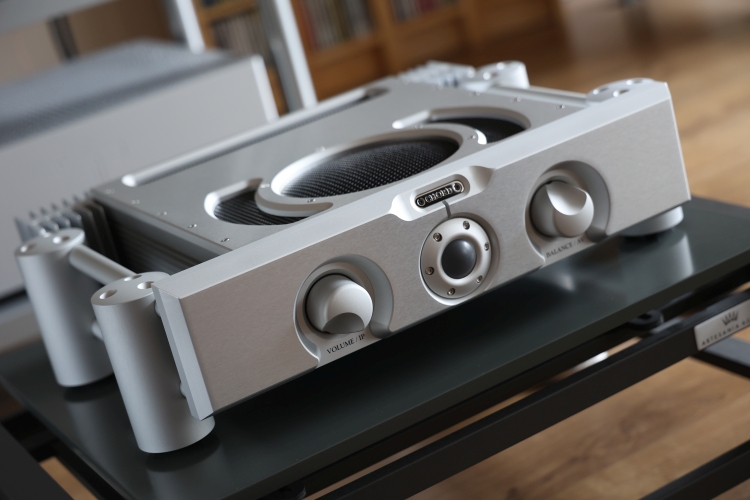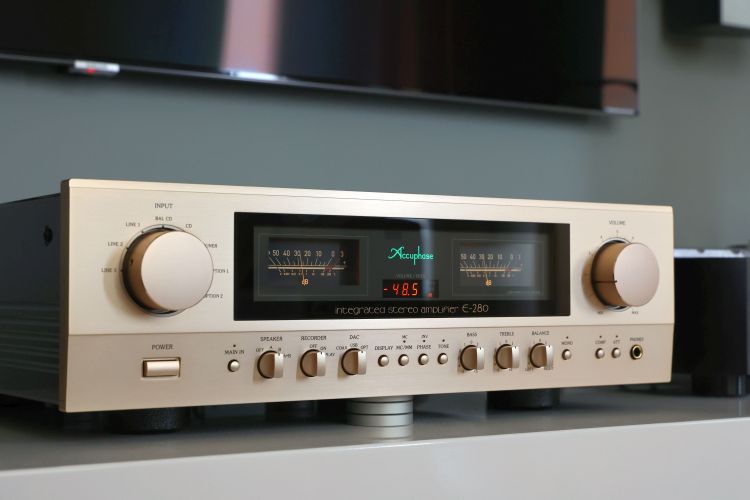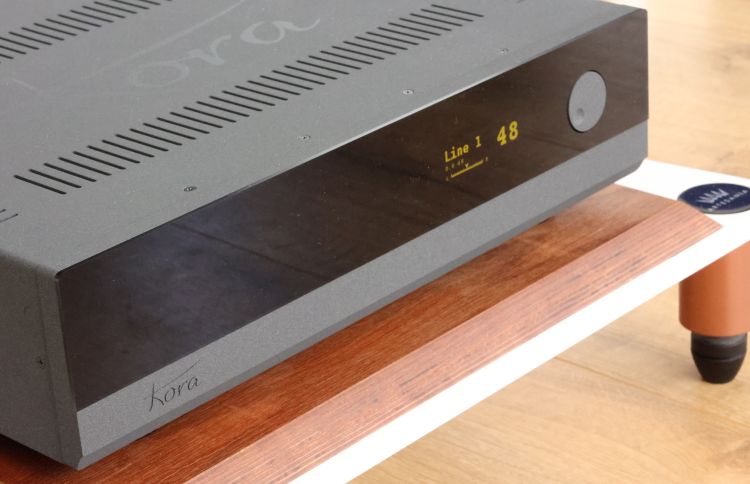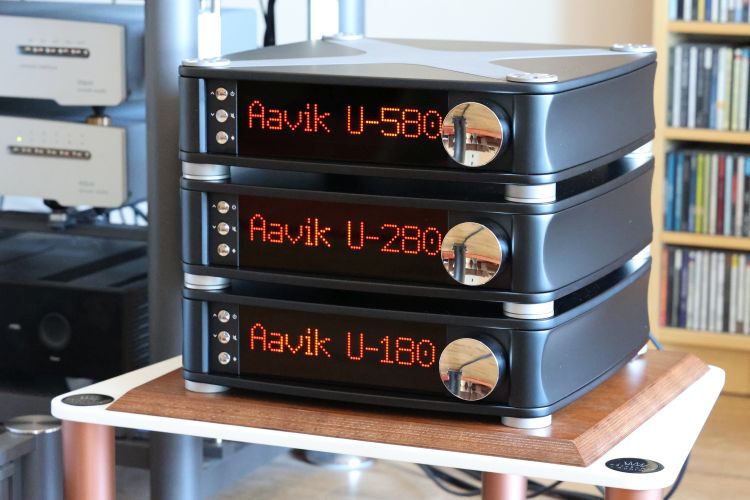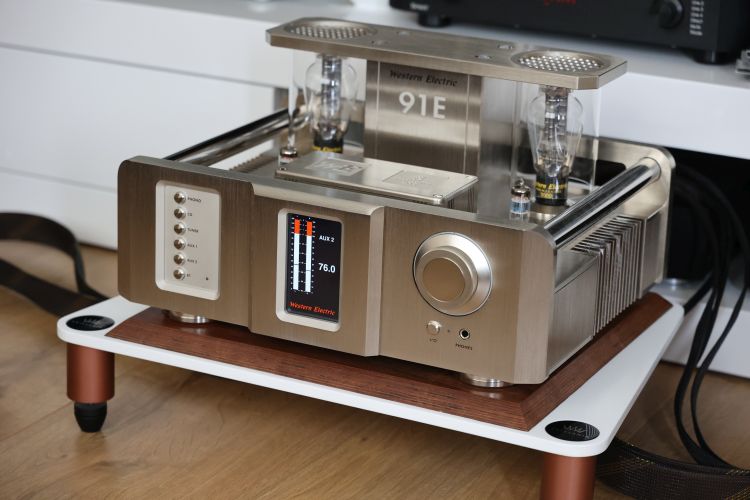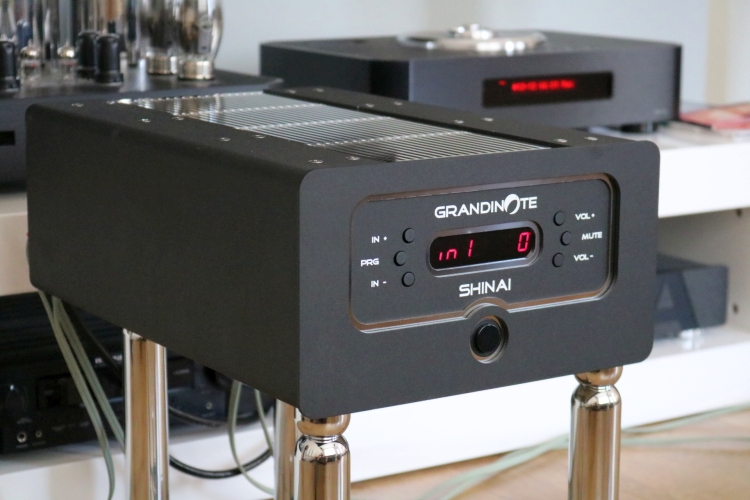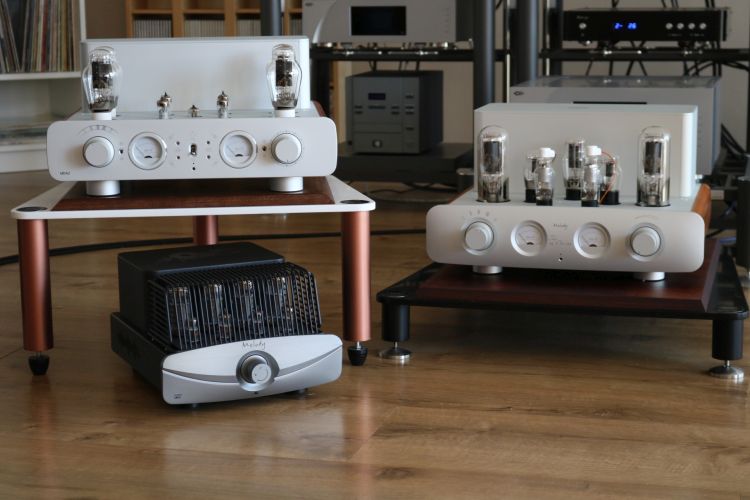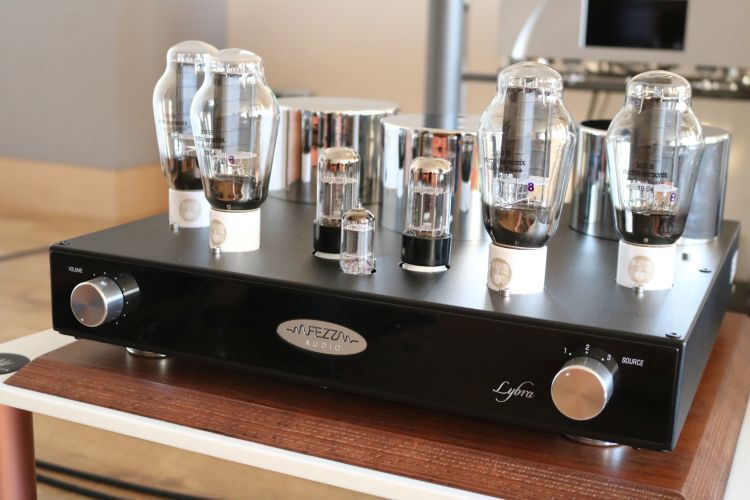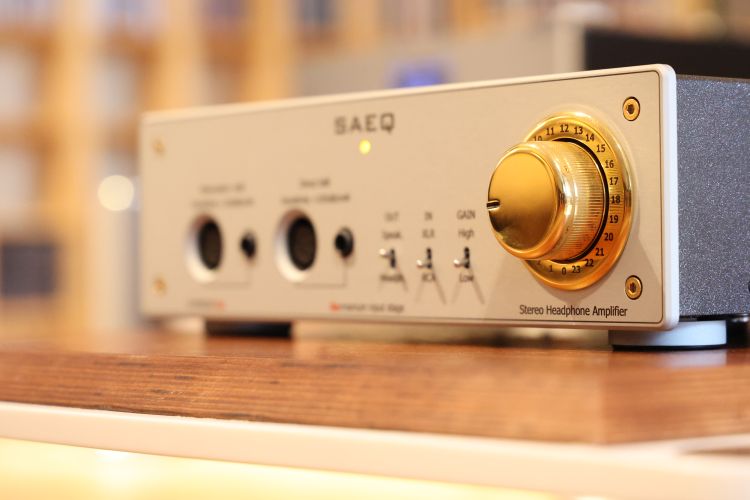
Headphone Listening – Round 2
Next up was Niels’ collection, or I should really say a part of his collection, for he has more than 10 headphones. But who am I to judge? 🙂
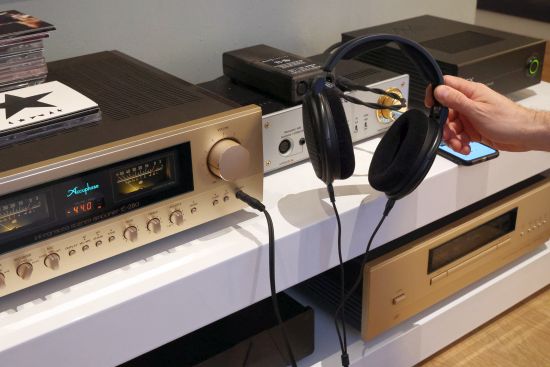
Sennheiser HD-650
First up was another Sennheiser HD-650. Sure enough, it impressed me again and Niels, too, was pleasantly surprised. This headphone impresses not by being extraordinary in any single field, but by holding it all together in such a well-balanced manner. And unlike the CA-1a, the HD-650 is very forgiving, you can play anything with it and it will always be nice. It makes even bad recordings palatable. But now that I know better, I instantly hear that it also never sounds truly realistic.
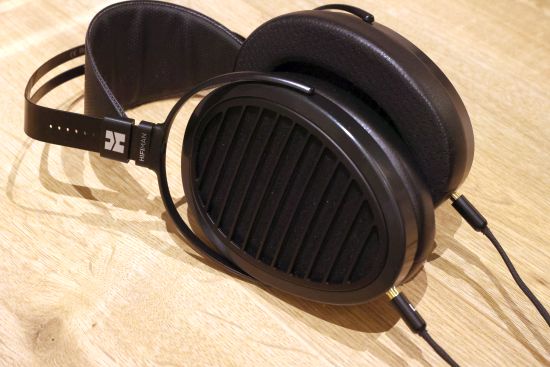
HifiMan Arya Stealth
Next up was the HifiMan Arya Stealth. This headphone uses planar magnetic drivers. Not pure ribbons as with the RAAL requisite CA-1a, but a flat voice-coil on a thin diaphragm, which is actually more similar to Magnepan speakers than the CA-1a’s pure ribbons. Interestingly, the HifiMan’s balance is not too dissimilar from the Sennheiser in that it sounds full, smooth, and rich, and with excellent bass. One could even say it has a saddled frequency curve (with a dip in the midrange). But the HifiMan is significantly more refined and detailed than the Sennheiser, as well as warmer and lusher. It also creates a larger soundstage and manages to free the sound more from your head. In addition, the HifiMan has none of the Sennheiser’s synthetic character and it sounds very natural which promotes long listening sessions.
In a nutshell, the HifiMan has the benefits of the Sennheiser but massively improves on it. It works really well with bass-driven music and is outstanding with R&B. However, it is not as fast and explicit, nor as transparent and linear as the RAAL.
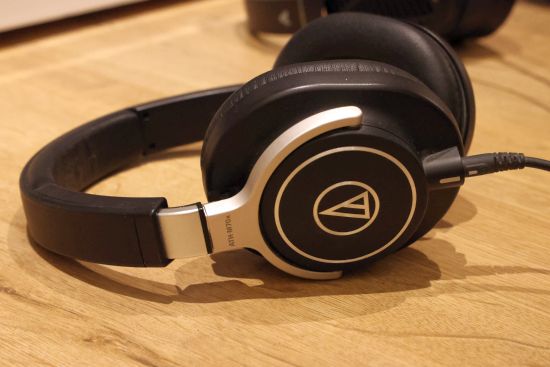
Audio Technica ATH-M70X
The next headphone is the Audio Technica ATH-M70X and this one really is the odd one out. To me, its frequency range sounds very much tilted up with a very spicy and frankly almost overbearing upper midrange prominence. It’s bordering on the brash side but stops just short of actually becoming edgy. On the upside, this headphone has a highly energetic and super-focused delivery that can work very well with dance tracks and other heavy electronic music. And although it’s not very comfortable to use, after prolonged listening, you do get more or less used to its bright presentation. Interestingly, it also classily avoids sounding synthetic.
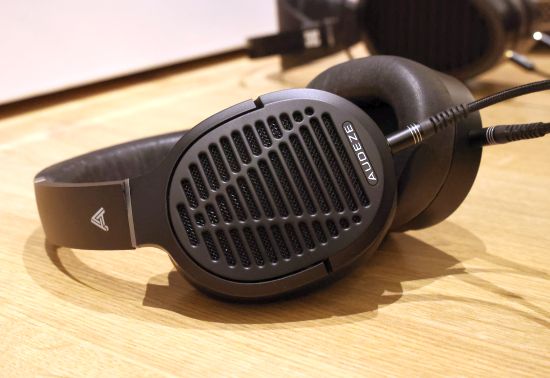
Audeze LCD-1
Finally, we have the Audeze LCD-1. This is pronounced “Audi-Say”, not, “Audiece” as I initially did before Niels corrected me. The LCD-1 uses planar magnetic drivers. Their implementation is not identical, but similar to those used in the HifiMan. The Audeze has a very different balance than the Sennheiser and HifiMan. Instead of relaxed and slightly warm, it sounds quite spicy and direct, and a little forward in the midrange. It’s remarkably expressive but especially after the HifiMan’s saddled midrange, the Audeze’s upper midrange takes some getting used to. But after a minute or 2, it no longer sounds forward or bright, just very open and detailed. It retains some sweetness but is ultimately not as gentle and refined as the HifiMan but really rather precise and revealing, without sounding brash or unpleasant. And its bass is well-formed, too. Not as big and rich as the HifiMan, but certainly not lean. Between the two, I do prefer the HifiMan, but it’s a hard decision. That’s probably why Niels has them both… But when we switch to the RAAL Requisite again, for all of its spicy liveliness, the Audeze, too, sounds comparatively slightly soft. I’m not saying the CA-1a is consistently the most-liked, but it sure is extremely impressive. There is just no argument that it simply keeps winning in the fields of resolution, articulation, precision, linearity, and transparency. And it has no added warmth or softness whatsoever.
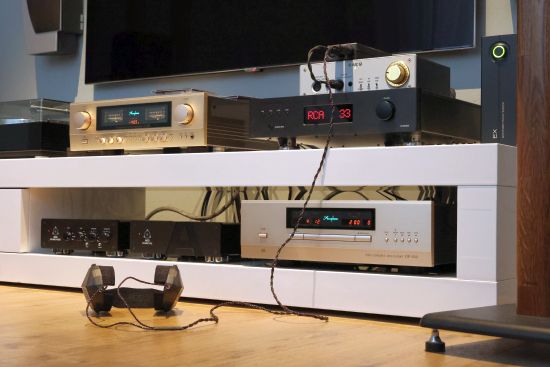
Of course, this is not a headphone review, but a review of a headphone amplifier. But if all these headphones made one thing clear, it’s that the SAEQ Hyperion Ge is like a chameleon. It allows each and every headphone to strut its particular strength(s) without injecting any noticeable character of its own. More importantly, it makes the headphones sound more different than via the Accuphase E-280 or Niels’ Musical Fidelity X-Can V3 with an upgraded power supply. Especially the latter was a bit of a disappointment as I really did not find it much better than the E-280. If anything, it was warmer, but not any more resolving, more transparent, or more natural.
Conclusion
Throughout the headphone listening, the Hyperion Ge had a total absence of electronic signature or synthesis, it is always utterly natural, and it has no artificial edge. But it also avoids ever sounding soft or round and it never holds back dynamically. I may not have experienced many headphone amplifiers, but I’m quite sure that this combination of traits is actually rare in any amplifier.
As an amplifier driving Xavian and Magico loudspeakers, the Hyperion Ge amazes with remarkable stability grip given its modest power rating. The amp sounds supremely liquid with a beguiling golden tube-like glow but this does not serve to make the sound feel covered up, colored, or enriched. Rather, the musical presentation itself is truly rich in and of itself. If anything, I’d swear that I was listening to a superb tube amp.
It excels in presenting music with a stunning level of resolution, transparency, and immediacy while remaining formidably refined and delicate. In addition, the soundstaging, depth, the layering within, the fantastic living-and-breathing aspect of the performances, not to mention its superb detailing and precise yet airy and liquid treble, all culminated in a sound that is just impossible to fault.

Availability
The manufacturer is currently working on the dealer- and distributor network. For now, the amplifier can be ordered directly via SAEQ.
External Links
Manufacturers:
SAEQ (Serbian Audio EQuipment)
RAAL Requisite
